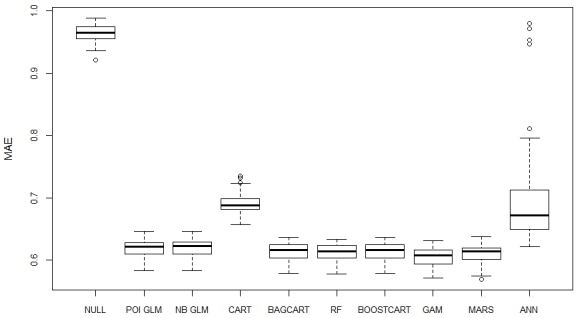Development of a Predictive Model for Deceased Donor Organ Yield
1Industrial and Operations Engineering, University of Michigan, Ann Arbor, MI
2School of Public Health, University of Michigan, Ann Arbor, MI
3Department of Internal Medicine, University of Michigan, Ann Arbor, MI.
Meeting: 2018 American Transplant Congress
Abstract number: A315
Keywords: Donation
Session Information
Session Name: Poster Session A: Non-Organ Specific: Disparities to Outcome and Access to Healthcare
Session Type: Poster Session
Date: Saturday, June 2, 2018
Session Time: 5:30pm-7:30pm
 Presentation Time: 5:30pm-7:30pm
Presentation Time: 5:30pm-7:30pm
Location: Hall 4EF
Organ transplantation is a lifesaving intervention for patients with organ failure. However, there is a gap between the supply and demand of organs in the U.S. and worldwide. This gap can be reduced by increasing the yield of organs per donor, yet the optimal predictive model for organ donor yield is uncertain. We aimed to compare different linear and non-linear statistical models to predict deceased donor organ yield. We used data from the OPTN database from 2000-2014 to parameterize our models. The following models were evaluated: generalized linear models (GLM), general additive models (GAM), classification and regression trees (CART), random forests (RF), bootstrap aggregated classification and regression trees (BAGCART), boosted classification and regression trees (BOOSTCART), multivariate adaptive regression splines (MARS), artificial neural networks (ANN), and mean-only (null) models. We used 80% of the data as a derivation cohort for a cross-validation procedure and the rest of the data as an external validation set. The cross-validation procedure was replicated 50 times and the random hold-outs consisted of 20% of the derivation cohort. Wilcoxon Rank Sum tests showed that a GAM had significantly lower mean absolute error (MAE) than the rest of the models (all p < 0.01; Figure1). The GAM suggested a negative relationship between deceased donor organ yield and hepatitis C infection or donation after cardiac death. In addition, the GAM implied that there are more complex relationships among deceased donor organ yield and donor age, body mass index, and terminal lab creatinine. Using the GAM to predict deceased donor organ yield, we would expect to improve prediction from at least 6 organs per 1000 donors (compared to the second-best model, a MARS) to at most 360 organs per 1000 donors (compared to a null model). A model to accurately predict deceased donor organ yield can serve as an aid to assess organ procurement performance and forecast future organ availability.
CITATION INFORMATION: Marrero Colon W., Lavieri M., Guikema S., Hutton D., Parikh N. Development of a Predictive Model for Deceased Donor Organ Yield Am J Transplant. 2017;17 (suppl 3).
To cite this abstract in AMA style:
Colon WMarrero, Lavieri M, Guikema S, Hutton D, Parikh N. Development of a Predictive Model for Deceased Donor Organ Yield [abstract]. https://atcmeetingabstracts.com/abstract/development-of-a-predictive-model-for-deceased-donor-organ-yield/. Accessed December 25, 2025.« Back to 2018 American Transplant Congress
